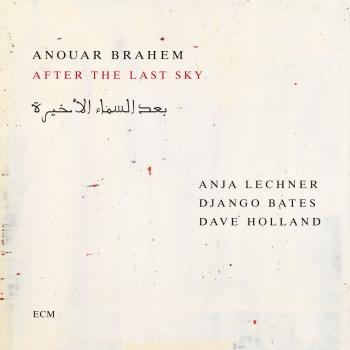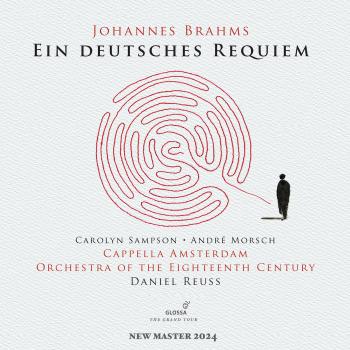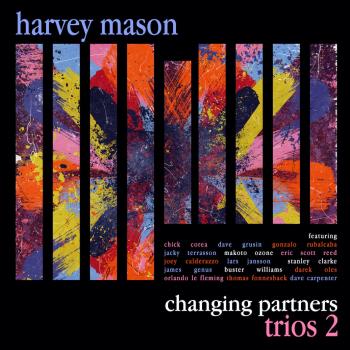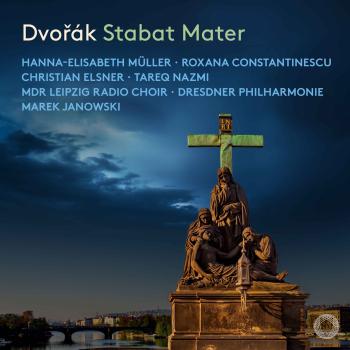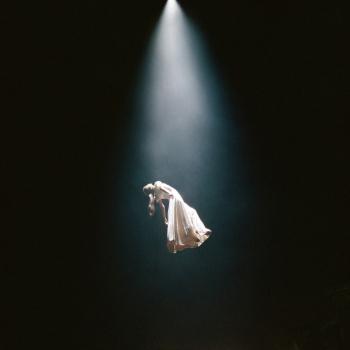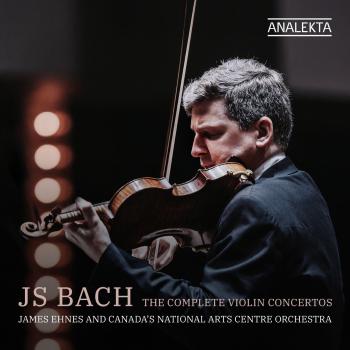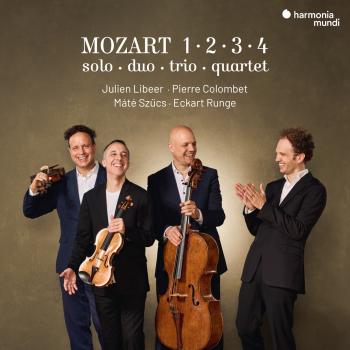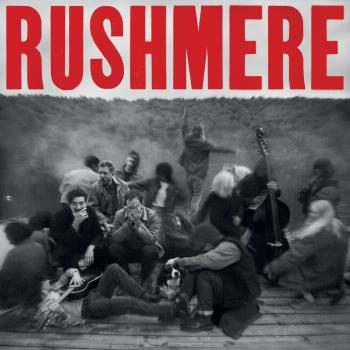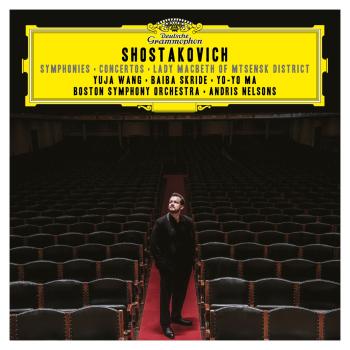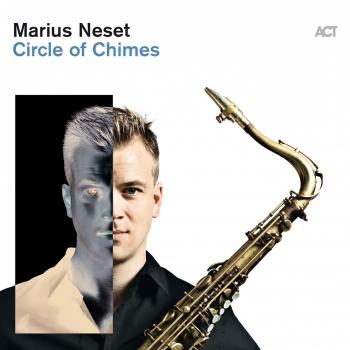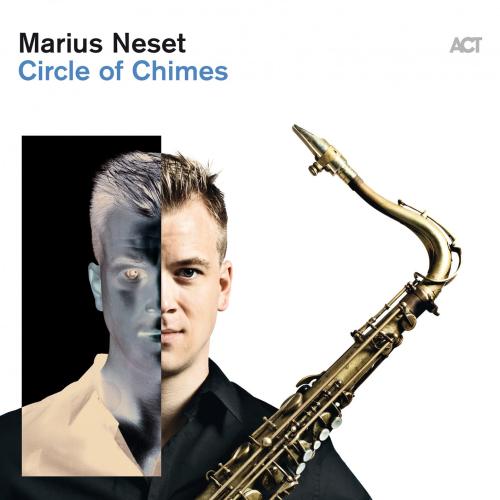
Album Info
Album Veröffentlichung:
2017
HRA-Veröffentlichung:
27.10.2017
Label: ACT Music
Genre: Jazz
Subgenre: Mainstream Jazz
Interpret: Marius Neset with Lionel Loueke, Ivo Neame, Petter Eldh, Anton Eger & Jim Hart
Das Album enthält Albumcover Booklet (PDF)
- 1 Satellite 09:15
- 2 Star 12:06
- 3 A New Resolution 08:47
- 4 Introduction to Prague's Ballet 02:49
- 5 Prague's Ballet 05:47
- 6 Life Goes On 05:53
- 7 Sirens of Cologne 08:22
- 8 The Silent Room 07:44
- 9 1994 11:44
- 10 Eclipse 05:14
Info zu Circle of Chimes
Der Saxofonist Marius Neset hält, was andere versprechen: nicht nur der „kommende Mann des skandinavischen Jazz“ (The Observer), sondern auch – als einziger Europäer – einer von 25 Hoffnungsträgern für die Zukunft des internationalen Jazz zu sein, wie der amerikanische Downbeat feststellte. Seit seinem ACT Debüt „Lion“ mit dem Trondheim Jazz Orchestra im Jahre 2014 überrascht Neset mit immer neuen Facetten. Auf „Circle of Chimes“ bringt der 1986 geborene Norweger all diese Erfahrungen zusammen und führt sie in eine neue Dimension.
Nach dem Big Band-Projekt „Lion“ folgten ein Jahr später im Quintett mit „Pinball“ „hochkünstlerisch geordnete Klanggebärden voller Lust und Drive“ (FAZ), darauf im letzten Herbst mit „Snowmelt“ dann ein furioser Dialog zwischen Jazzquartett und Kammerorchester. Für das Album mit der London Sinfonietta gewann er im Juni in der Kategorie „Best Large Ensemble“ den ECHO Jazz. Mehr noch, gleichzeitig war er bei zwei weiteren ECHO Jazz prämierten Alben beteiligt: als Solist der „e.s.t. Symphony“ und im Trio mit Lars Danielsson und Morten Lund spielte er „Sun Blowing“ ein. Wenig später, beim Polar Music Prize, dem wichtigsten skandinavischen Musikpreis, beeindruckte Neset niemand Geringeren als Wayne Shorter mit der Interpretation eines seiner Stücke tief.
Marius Neset ist der europäische Jazzmusiker der Stunde und mit seinem neuen Album „Circle of Chimes“ dürfte seine Reputation noch steigen. Es ist ein weiteres Beispiel für seinen enormen Erfindungsgeist und sein überragendes Spielvermögen, aber auch Ausdruck einer neuen Abgeklärtheit. „Ich lege heute mehr Wert auf die Melodien“, sagt Neset selbst, „und sie sind minimalistischer, lassen mehr Platz für Improvisation und Freiheit, gleichzeitig aber sehr ausarrangiert. Das Komplexe fällt nur nicht mehr so auf.“ Die Entstehungsgeschichte von „Circle of Chimes“ belegt das. Dem Album liegt ein Kompositionsauftrag der Kölner Philharmonie für ein Neujahrskonzert zugrunde. Als Neset sich zum Komponieren an den Flügel setzte, kam er auf jenes Glockenspiel-artige Motiv, mit dem „Circle of Chimes“ in „Satellite“ beginnt und in „Eclipse“ auch wieder ausklingt. „Ganz einfache Akkorde und Harmonien, man mag es pathetisch nennen, aber es fühlte sich für mich nach Neujahr an. Und aus den Glocken hat sich ein rhythmisches Pattern ergeben. Ich denke nicht, dass man es hören kann, aber dieses Pattern prägt das ganze Album.“
Von der Besetzung her knüpft „Circle of Chimes“ an „Pinball“ an: Wieder bildet das gefeierte Quintett mit Petter Eldh am Kontrabass, Anton Eger an Schlagzeug und Ivo Neame am Piano sowie Jim Hart an Vibrafon, Marimba und Perkussion das Rückgrat. „Wir spielen seit Jahren intensiv zusammen, um jetzt mit ,Circle of Chimes‘ einen Schritt weiter zugehen“, sagt Neset. Und wieder sorgten bei einigen Stücken der Cellist Andreas Brantelid und Nesets Flöte spielende Schwester Ingrid für klassische Elemente und instrumentale Variabilität. Dazu kommt nun noch der Star-Gitarrist Lionel Loueke, vor allem bekannt durch seine Zusammenarbeit mit Herbie Hancock. „Ich habe in den vergangenen Jahren sehr oft mit ihm gespielt, und wollte unbedingt seine Gitarre und auch seinen Gesang als zusätzliche Farbe“, berichtet Neset. So findet sich nun auch ein starkes afrikanisches Element, zum Beispiel bei „Star“ mit flirrender Highlife-Rhythmik und afrikanischen Scat-Gesang.
Was natürlich nur eine Zutat ist in diesem opulenten Menü, das Marius Neset und seine kongenialen Begleiter servieren. „A New Resolution“ etwa ist eine von Klavier und Saxofon getragene, hochvirtuose Funk-Studie; „Prague‘s Ballet“ eine von Streicherklängen und Nesets Sopransaxofon dominierte Ballade, die übrigens nichts mit Prag zu tun hat: Der spielerisch leichte Tanz entstand nach dem Hören von Mozart ganz schnell, und zwar „in dem Raum am ‚Prague‘s Boulevard‘ in Kopenhagen, in dem die meisten meiner Kompositionen entstehen.“ „Sirens of Cologne“ hingegen zollt der Rolle Kölns bei der Entstehungsgeschichte von „Circle of Chimes“ Tribut: Ein zirzensisches Stück, das – unbewusst, wie Neset zugibt – das karnevalistische Treiben der Stadt einfängt. Bei „1994“ ließ sich Neset von der Erinnerung als Neunjähriger an die Olympischen Spiele in diesem Jahr inspirieren, mit einem eigenwilligen Shuffle, der nordische Folksongs aufnimmt. „Life Goes On“ schließlich demonstriert perfekt, wie Neset einer starken Melodie auch die vertracktesten Notierungen („es ist vielleicht das Schnellste, das ich je komponiert habe“) bezwingend einfach klingen lassen kann.
Ein mitreißender, bezaubernder und Geist wie Gemüt anregender „Reigen aus Glockenklang“, der Marius Neset nicht nur als Mann der Zukunft, sondern auch als herausragende Größe der Gegenwart etabliert.
Marius Neset, Tenor- und Sopransaxofon
Lionel Loueke, Gitarre, Gesang
Andreas Brantelid, Cello
Ingrid Neset, Flöte, Piccolo, Altflöte
Ivo Neame, Klavier
Jim Hart, Vibrafon, Marimba, Percussion
Petter Eldh, Kontrabass
Anton Eger, Schlagzeug, Percussion
Recorded 2nd - 4th January 2016 by August Wanngren at The Village Studios, Copenhagen
Mixed by August Wanngren at Virkeligheden
Mastered by Thomas Eberger at Stockholm Mastering
Produced by Marius Neset
Marius Neset
was born in 1985, in Bergen, a sleepy Norwegian harbour town that’s home to the internationally renowned Nattjazz Festival (Neset won the Talent Award there in 2004). Besides his love of jazz in its widest sense, the saxophonist-composer also grew up listening to bands from the so-called ‘Bergen wave’ of post-rock such as Royksopp (and from there on to Radiohead) through to the great classical composer of his hometown Edvard Grieg as well as more contemporary art music. “I love being in the mountains, and silence is a music as well. Maybe it’s because I’m from Norway I feel this,” he says. It accounts for the huge diversity and fluidity of movement between different elements of so-called genres that’s been a key characteristic of Marius Neset’s music to date.
When only 5 years old, before taking up the sax, he took lessons on drums and this has had a significant impact on his approach to composition in particular. “I think the drums gave me a rhythmic base that was very important. I learnt very young to play in these odd meters so I think I have a very natural feel for it,” he says. Neset, in live performance, also has the uncanny ability of making one saxophone sound like two or three.
In 2003 Neset moved to Copenhagen to study at the Rhythmic Music Conservatory. The great English pianist and large ensemble arranger Django Bates was professor there at the time and became Neset’s mentor. The saxophonist went on to become the star turn in Bates’ student big band StoRMchaser recording a CD Spring is Here (Shall we Dance?) in 2008. Meanwhile Neset also released his debut Suite for the Seven Mountains that year on the Danish Calibrated label. Besides a string quartet, it featured the Swedish drummer Anton Eger, who alongside Neset was also a leading member of Scandi-fusion boy band JazzKamikaze. In 2010 Django Bates took him to London to play at a concert at Kings Place marking his 50th birthday. Neset also appeared as a guest in Django Bates’ long time ensemble Human Chain at the famous Ronnie Scott’s club. Recorded by BBC Jazz on 3 he wowed the audience with his contrast of lightening virtuosity and tender, ethereal lyricism. One of those blown away was Dave Stapleton head of the fast emerging UK independent jazz label Edition Records.
Edition signed Neset to the label in 2011. GoldenXplosion, featuring a quartet that included Django on keys and the Scandi-Brit trio Phronesis’ rhythm section of Jasper Hoiby and Eger, was released to glowing press reviews with The Guardian writer John Fordham accurately predicting Neset would be, “on his way to being one of the biggest new draws on the circuit”. By the time of his second CD on Edition Birds in 2012, Neset had started developing his penchant for larger ensemble music and a widescreen palette of instrumental sound.
Still only 29 years of age, Neset is successfully hitting the international stage, and being talked about as a big tenor in a lineage that extends from the post-bop Americans from Michael Brecker, Chris Potter through to fellow Norwegian Jan Garbarek. But there’s a lot more to one of Europe’s brightest young stars than that. “I’m very inspired by people like Frank Zappa, Django Bates, Pat Metheny and Wayne Shorter where the music and the playing is one,” he has said. Neset’s classy, cohesive composition and arranging skills have come into even sharper focus with a new album Lion released in 2014, his debut for the Munich-based ACT, one of Europe’s leading jazz labels, in a collaboration with the celebrated Trondheim Jazz Orchestra, whose former collaborations have boasted the likes of Chick Corea and Pat Metheny. It was originally a commission to compose for the 13-piece orchestra (in a lineup that includes tuba player Daniel Herskedal, a fellow student at RMC who together released an impressive duo album Neck of the Woods in 2012.) for a concert at the 2012 Molde Jazz Festival. “After the premiere in Molde, these compositions felt so special that we decided to record this album and play many more concerts with it,” he says.
Booklet für Circle of Chimes

